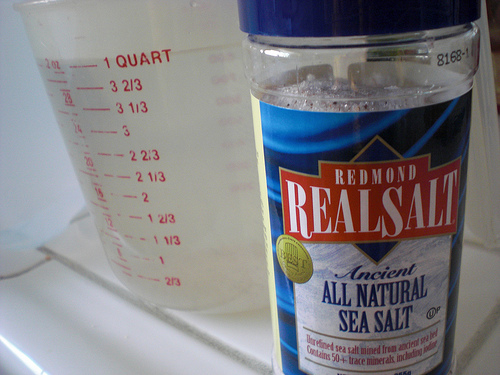
You don't need to watch your salt as much as they said, but you still need to eat less of it than you already are. That's the most recent conclusion in the long-running war on sodium in the American diet.
Previously, the Institute of Medicine advised adult Americans to keep their salt consumption under 1,500 milligrams per day. To put that into perspective, that's the same amount of salt found in 8.3 ounces of Doritos Cool Ranch chips, two hot dogs, a cup and a half of canned soup, or three servings of Top Ramen noodles.
It sounds like it might be an attainable number… until you learn that we consume an average of 3,400 milligrams of salt per day.
The fundamental problem is that we love salt. We crave salt. Salt doesn't just enhance the flavor of foods; it is a flavor in its own right, and one that we like very very much. Companies have found that the more salt they put into their products, the more we buy them, which is why it is as ubiquitous an ingredient as sugar or fat (the other two things that we crave to an irrational extent).
Furthermore, the more salt you eat, the more you crave. It's a strange vicious cycle, but the reverse is true: The less salt you eat, the less salt you crave. Cutting back on your sodium for just a few months can recalibrate your salt sensors, so to speak.
But there's another problem: No one has conclusively proven that salt intake is bad for you. There are studies on both sides of the debate. In the public's mind, salt is bad for your blood pressure, but it turns out that genetics play a far bigger role in blood pressure than anything else. Thus, the panel recently bumped up their maximum salt recommendation to 2,300 milligrams per day. That's still well below the average American intake, but at least it's a little more realistic.
Image courtesy Flickr/i am real estate photographer

0 comments